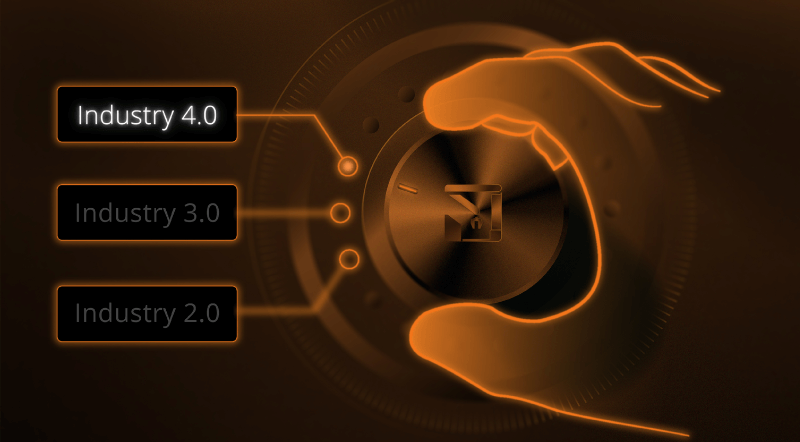Industry 4.0 is a revolution that has been underway for just over a decade, but it is mainly the large multinational companies that have the capital, knowledge, and capabilities to dynamically follow the spirit of change. Smaller companies and enterprises whose production does not rely on large volumes do not see an opportunity in implementing automation. However, there are areas where changes, even small ones, can significantly facilitate and improve the functioning of industrial processes.
What areas to pay attention to prepare a business for the challenges of Industry 4.0?

Automatic and flexible production line
Dedicated production lines can be created based on a well-defined purpose, needs, and technological challenges to improve even a small business. Low volume production batches can be made by designing modules so that the machine, or line, can be adapted to change to a different type of packaging or product. In this way, the production section can produce alternately new type products instead of having to implement several separate process lines.
The line equipped with the vision system can both produce and check the quality of manufactured goods. This solution eliminates possible errors and also ensures repeatability of the process and accelerates its time. Constantly control the correct functioning of machines, their efficiency, and production continuity is possible thanks to advanced systems managed by the network.
Prototyping and low-volume production on a 3D printer
Additive manufacturing is one of the areas of Industry 4.0. And although the beginnings of this technology took place long before the start of the fourth industrial revolution, the biggest public interest in this topic falls precisely at the beginning of the second decade of the 21st century. Since then, 3D printing has become an important and increasingly recognized production element that has found its way into many industrial technological processes. This is still the case now. Many companies are choosing to implement 3D printing technology because it can help in the following areas:
- maintaining production continuity (maintenance) by being able to produce spare parts for machines,
- produce low-volume series of personalized products or those with unusual geometries
- developing tools to simplify and speed up current tasks,
- prototyping of products and semi-finished products,
- production of scenography, costumes, and advertising models.
However, 3D printing technology has many types. Some of them (for example 3D printing from concrete) are in the development stage, and they have not yet reached market maturity. But they can revolutionize, for example, the construction industry in the future (in some parts of the world this process is already taking place).
Digitalization and systems integration
The dynamic progress in the emergence of factories of the future should be attributed to digitization and development in connection with the flow and collection of data. The integration of multiple machines, equipment, industrial robots into a single information system makes it possible to manage them. In addition, it also makes it possible to collect a huge amount of information, to conduct an in-depth analysis of the functioning of different parts of the process. All this, in turn, may help in its improvement. It is relevant for example for production capacity assessment, risk assessment of introducing a new product on the market, or company's efficiency. More data means more knowledge and awareness of how the company operates, and this, in turn, can help find areas that can be improved.
Although industrial and digital transformation in Poland has been slow, it is worth noting that as a result of the Covid-19 pandemic, people have begun to recognize that change is needed. Entrepreneurs have started to notice that digitalization can help make businesses more flexible. Transformations in this area can ensure their production continuity regardless of global threats related to labor shortages or the need to change work patterns.
